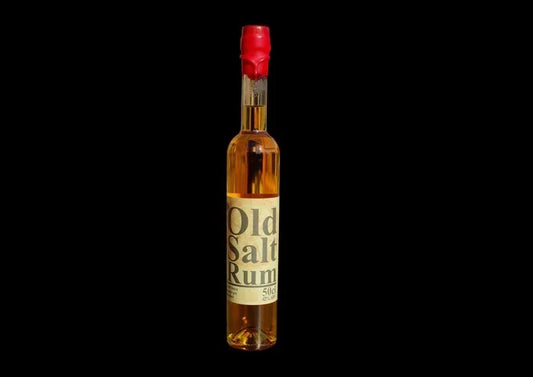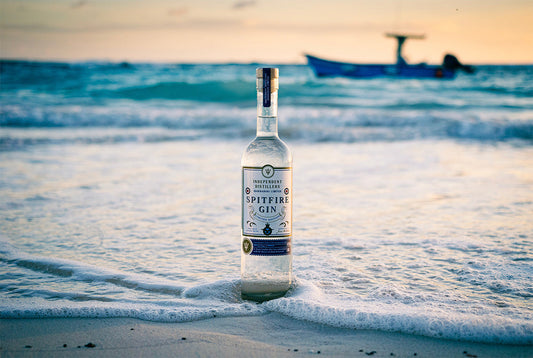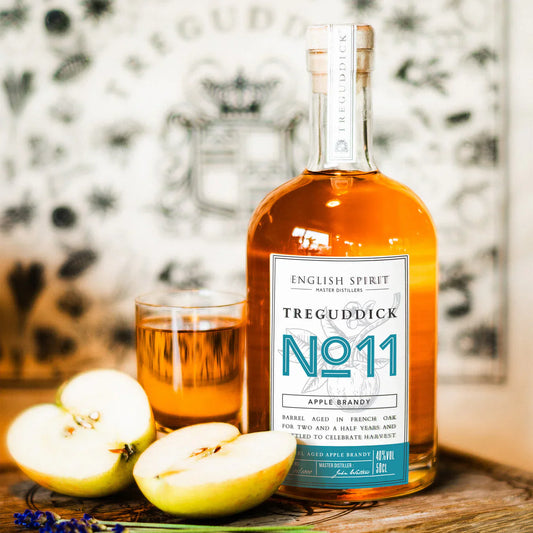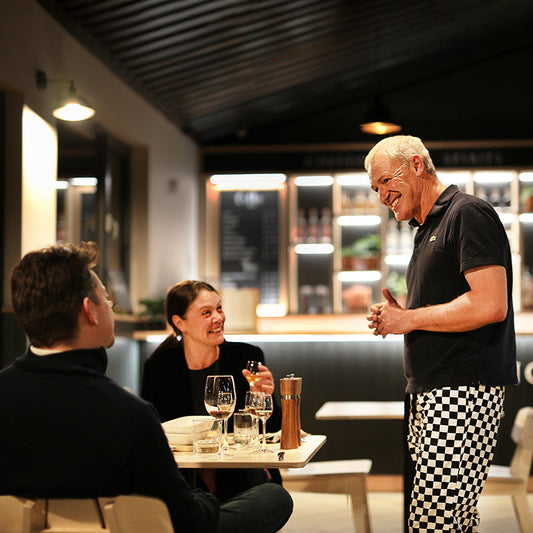The universe began with a rather large bang 13.8 billion years ago, though there was nobody about to disturb.
100 to 200 million years later the first stars began to form. And probably 150 million to 300 million years after the BB the first stars started to go bang themselves, in enormous galactic scale firework shows called supernova(e)! What’s important about this? Well, inside stars simple atoms are made and when stars go bang more complex heavier atoms are made - and from this collection of the simple to the heavier atoms - when they bond together - molecules are formed. From molecules living things are made.
Just out of curiosity our galaxy - the Milky Way - has 100-400 billion stars in it! Current estimates put the visible (and not the entire Universe) at roughly equivalent to 2 trillion galaxies or 400 sextillion stars (ten to the power of 21!).
When stars explode they spit their atoms into vast distances of interstellar space and there they exist as a mix of gases - hydrogen and helium; along with dust made of tiny grains of silicates, carbon and ice, perhaps with carbon dioxide frozen on their surfaces. And all the while these are bombarded by high-energy particles, electromagnetic radiation - from long radio waves to high-energy gamma rays and the famous Cosmic Microwave Background radiation - the afterglow from the BB. Along with a little tweak from magnetic and gravity fields. This melting pot brings about the conversion of simple stuff into more complex molecules.
I think it's fair to say that we have all stared up at the stars at night in complete wonder.
There we stand on a planet that formed 4.54 billion years ago from a swirling disk of gas and dust called the solar nebula. 3.8 billion years ago our hot proto acidic oceans formed - either from water from inside the planet seeping out or brought by colliding asteroids and meteorites or both. From what we can uncover, no soon as there were oceans there was life.
There was a bit of a wait for primates though, with the first candidate (Purgatorius - a ratty thing) - raising its snout 65 million years ago; by 55 million years ago its difficult to argue that Archicebus (China) or Teilhardina (pretty much all over North America, Europe and Asia) weren’t the real McCoy. 25-30 million years ago Old World monkeys split from apes. Apes became more upright, lost their tails and developed larger brains. About 6 to 7 million years ago our ancestors split from other apes. Lucy and her lot were about in Africa 4-2 million years ago, good old Australopithecines. Our first real bunch appeared 2.8 million years ago - the “handy man” (Homo Habilis), loved a tool you know. Close relatives came and went - Homo erectus and neanderthalensis. What was clearly us appeared about 300,000 years ago and a mere 50,000 years ago there was a surge in complex behaviour - sophisticated tools, arts, symbolic thought and complex language. Tens of thousands of years passed and then the telescope revolution hit a major turning point in the 1600s with Galileo taking it on in leaps and bounds.
What came from star dust in a very round about way could now view stars that made the dust.
Nowadays we have a complex array of telescopes in space turned outwards, investigating the viewable Universe. Guess what we found near the centre of our Milky Way?
There’s a vast dense cloud of gas and dust, called Sagittarius B2 (about 25,000 light years away). It’s one of the most active regions of star formation in our galaxy, a veritable nursery. It stretches hundreds of light-years across. And this cloud is a cocktail of booze!
I kid you not!
It's mainly methanol, but there’s a fair bit of ethanol in there too - that’s the stuff we drink - plus a panoply of complex organic molecules and ethyl formate! The latter gives raspberries its smell and is found in some rum; so this enormous “bar” smells of raspberries and rum! And what an amazing thought that the very first cocktail could be rum and raspberry shrub!










